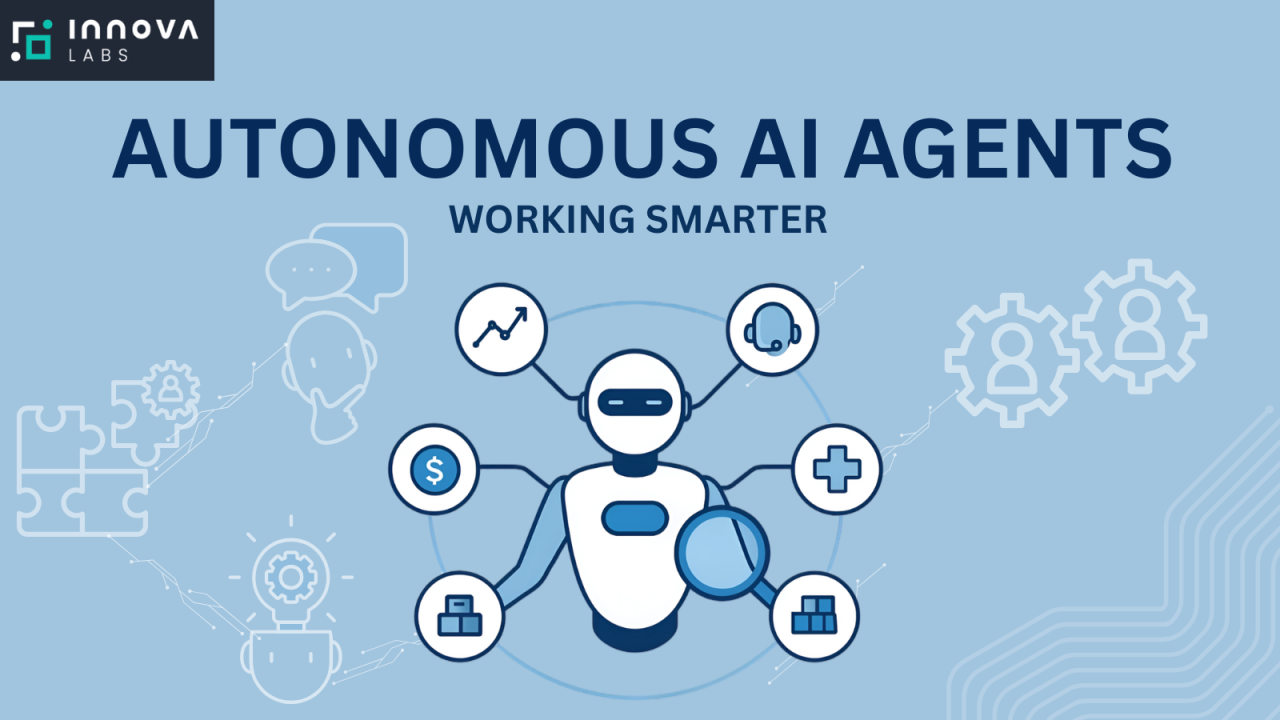Liquid AI’s LFM2-VL-3B Brings a 3B-Parameter Vision-Language Model (VLM) to Edge-Class Devices
Summary: Liquid AI recently released LFM2-VL-3B — a 3-billion-parameter vision-language model built for low-latency, on-device inference. It extends the LFM2-VL family (450M, 1.6B) toward higher accuracy while keeping the memory, latency, and deployment advantages that make Liquid’s models attractive for smartphones, embedded systems, and robotics platforms. The model is available through Liquid’s LEAP platform and on Hugging Face under an open LFM license. liquid.ai+1
Why this matters (short version)
We’ve seen two parallel trends in multimodal AI: (1) rapidly improving capability in vision-language tasks, and (2) stronger pressure to run models on-device or at the network edge to improve privacy, reduce latency, and lower cloud costs. LFM2-VL-3B sits at the intersection of those trends: it’s large enough to deliver better reasoning and visual understanding than smaller edge models, yet engineered for memory and speed profiles that let it run on “edge-class” hardware. That combination opens practical doors for real-time inspection, robotics perception, mobile assistants, and industrial vision applications. liquid.ai+1
What LFM2-VL-3B is (technical overview)
LFM2-VL-3B is the newest member of Liquid AI’s LFM2-VL series. Architecturally, it builds on Liquid’s LFM2 dense backbone (notably the LFM2-2.6B lineage) and integrates an image encoder (SigLIP2 400M NaFlex encoder in Liquid’s description) to process images at native resolution while keeping tokenization and multimodal fusion efficient. The model accepts interleaved image and text inputs and outputs text — using a ChatML-like interface where <image> sentinels are replaced by encoded image tokens at runtime. The default text context length Liquid lists is large (32,768 tokens), which supports lengthy multimodal conversations and detailed contextual reasoning. liquid.ai+1
Key practical details released by Liquid AI:
-
Parameter count: ~3 billion (a step up from the 1.6B family member). liquid.ai
-
Input modality: Interleaved images + text (image tokenization via the model’s processor). MarkTechPost
-
Context window: Very large default text context (32,768 tokens). MarkTechPost
-
Availability: Released on Liquid AI’s LEAP platform and hosted on Hugging Face; open-weight checkpoint and GGUF quantizations are available. Hugging Face+1
Performance and benchmarks — what to expect
Liquid positions LFM2-VL-3B as trading some extreme compactness for measurable gains in accuracy and reasoning over the 450M and 1.6B variants. Early benchmark reporting and community runs (including evaluations surfaced on Hugging Face and community forums) show the model performing competitively on multimodal instruction following and visual reasoning testbeds such as MM-IFEval, RealWorldQA, and others used by the local-model community. Users report that the 3B model often closes the gap against larger server-class VLMs while still offering edge-friendly latency profiles when quantized appropriately (GGUF, etc.). Hugging Face+1
Important practical takeaway: raw benchmark numbers vary by task and quantization strategy. If you need top SOTA results for very difficult visual reasoning tasks, larger server models still have an edge — but LFM2-VL-3B is now a very attractive sweet spot for good enough + low latency + on-device use cases.
Edge deployment: why Liquid calls this “edge-class”
Liquid’s LFM2 family is specifically engineered for device-aware deployment. That means the model architecture, runtime stack, and tooling are designed to reduce memory pressure, exploit CPU/GPU/tensor acceleration on local silicon, and support quantized formats commonly used by the local inference community. The company bundles model releases with documentation, quantized artifacts (GGUF), and integration with LEAP — Liquid’s developer platform for deploying models across mobile, desktop, and embedded targets. Liquid also demonstrates LFM2-VL-3B running entirely locally on AMD Ryzen™ AI processors as part of a robotics proof-of-concept, showing the model’s viability for embedded autonomy without cloud connectivity. Liquid Edge AI Platform+1
Two engineering notes that enable edge viability:
-
Hybrid architecture design: the LFM2 backbone balances dense compute with lean memory use, making it easier to quantize and shard for local inference. liquid.ai
-
Tooling & formats: providing GGUF builds and explicit guidance for common runtimes significantly reduces friction for on-device deployment. Hugging Face
Real-world demos: robotics and embedded autonomy
Liquid has published examples of LFM2-VL-3B used as an “agentic perception” module inside mobile robotics stacks. In one demo (in collaboration with AMD and Robotec.ai), a mobile robot operating in a simulated warehouse environment performed perception-to-action tasks — identifying package defects, flagging safety hazards, and recommending corrective actions — with all inference running locally on AMD hardware. The demonstration highlights two things: (a) the model’s outputs can be structured to feed downstream decision systems, and (b) on-device inference avoids the network latency and privacy concerns of cloud routing for real-time robotic autonomy. liquid.ai
For product teams building embedded autonomy or logistics automation, that is a meaningful proof point: you can move beyond simple image classification to richer, instruction-driven multimodal perception without adding cloud dependencies.
Licensing and openness
Liquid AI releases LFM2-VL-3B under the LFM Open License v1.0 and publishes weights and model cards on Hugging Face. That opens the door for a broad developer audience to inspect, fine-tune, quantize, and integrate the model into research and product prototypes. The open-weight release plus community quant builds (GGUF) has already accelerated adoption among hobbyists, local-AI practitioners, and companies experimenting with on-device multimodal stacks. If you plan to incorporate the model into commercial products, review the license terms carefully — Liquid’s documentation and the Hugging Face model card contain the authoritative details. Hugging Face+1
Use cases where LFM2-VL-3B fits best
Because LFM2-VL-3B balances capability with device constraints, it’s particularly well-suited for:
-
Mobile assistants that analyze images locally (e.g., camera-based help, accessibility apps that describe scenes).
-
Industrial inspection on edge devices (real-time defect detection with textual reporting and suggested fixes).
-
Robotics perception modules where decisions must be fast and offline (warehouse robots, inspection drones).
-
Retail & kiosk analytics where privacy and latency matter (on-premise visual search, signage intelligence).
-
On-device multimodal agents for secure environments (healthcare devices, offline enterprise tools). liquid.ai
Integrating LFM2-VL-3B — practical tips
If you’re an engineer or product lead wanting to try LFM2-VL-3B, here’s a practical checklist:
-
Start with the model card and example repo on Hugging Face. Confirm tokenization, ChatML template usage, and image sentinel conventions. Hugging Face
-
Test quantized builds (GGUF) on target hardware. Evaluate latency and memory at different quantization levels — 4-bit/8-bit builds often offer strong tradeoffs. Hugging Face
-
Measure performance on your tasks (not just public benchmarks). Benchmarks are useful, but end-user accuracy depends on dataset distribution and prompt engineering. reddit.com
-
Pipeline design: use LFM2-VL-3B as a perception + reasoning layer; for very heavy planning or long-horizon reasoning, combine it with lightweight symbolic modules or smaller specialized networks. liquid.ai
-
Privacy & offline mode: design for local data handling policies — on-device models are an asset for regulated industries. Liquid Edge AI Platform
Limitations and caveats
No single model is the right answer for every problem. Key limitations to remember:
-
Not SOTA everywhere: While LFM2-VL-3B narrows the gap with larger server models, for the most extreme visual reasoning benchmarks, much larger models still outperform it. Choose based on the accuracy vs. latency tradeoff you need. reddit.com
-
Quantization effects: aggressive quantization reduces memory and latency but can degrade performance on subtle visual tasks; validate on representative data. Hugging Face
-
Domain shift: models trained at general scale may struggle with domain-specific visual symbols or specialized industrial imagery unless fine-tuned or provided with task-specific prompts.
-
Instruction robustness: while Liquid provides instruction-following templates, multimodal instruction tuning is still an active research area; prompt design and few-shot examples help. liquid.ai
Broader implications: edge multimodal AI is maturing
LFM2-VL-3B is evidence of a broader movement: multimodal AI is entering a phase where practical deployment constraints (latency, privacy, hardware diversity) are shaping model architecture and release strategy. Open-weight, device-aware models let developers iterate faster on product ideas without cloud costs, and they help organizations that cannot share sensitive images with third-party clouds keep data local. That will accelerate new classes of applications — especially in robotics, assistive tech, and regulated industries. Liquid’s release also reinforces a community trend where open checkpoints plus community quant formats (GGUF, etc.) enable rapid experimentation. liquid.ai+1
What to watch next
If you’re tracking this space, watch for three things over the coming months:
-
Community benchmarks & comparisons. Expect head-to-head tests between LFM2-VL-3B and other 2–5B multimodal models (Qwen-VL, InternVL variants, etc.) on suites like MM-IFEval and RealWorldQA. Community evaluations will clarify real-world tradeoffs. reddit.com
-
Quantization & runtime improvements. Tooling (runtimes, compiler optimizations, and vendor SDKs like AMD/Qualcomm/Apple runtimes) will further lower the bar to run 3B models on edge silicon. Liquid’s AMD demo is an early sign of that partnership direction. liquid.ai
-
Vertical integrations. Look for LFM2-VL-3B being integrated into robotics stacks, mobile SDKs, and privacy-first enterprise apps — and for companies to publish case studies showing latency, cost, and privacy improvements vs. cloud alternatives. Liquid Edge AI Platform
Conclusion
Liquid AI’s LFM2-VL-3B is an important step in bringing more capable multimodal models to devices that cannot rely on constant cloud connectivity. It’s not attempting to be the largest or the absolute top benchmark scorer — instead, it focuses on the pragmatic sweet spot of capability, latency, and deployability. For product teams building mobile assistants, industrial inspection systems, and embedded robots, LFM2-VL-3B offers a compelling new option: strong multimodal reasoning that can run locally, protect data, and interact naturally with users and downstream systems. If your roadmap includes low-latency visual understanding or on-device multimodal agents, this model is worth evaluating. liquid.ai+1
For quick updates, follow our whatsapp –https://whatsapp.com/channel/0029VbAabEC11ulGy0ZwRi3j
https://bitsofall.com/https-yourblogdomain-com-apps-in-chatgpt-the-next-evolution/
How to Build Your Own Database: A Step-by-Step Guide for Beginners
Strategic partnerships between major tech companies — the OpenAI × Broadcom playbook







